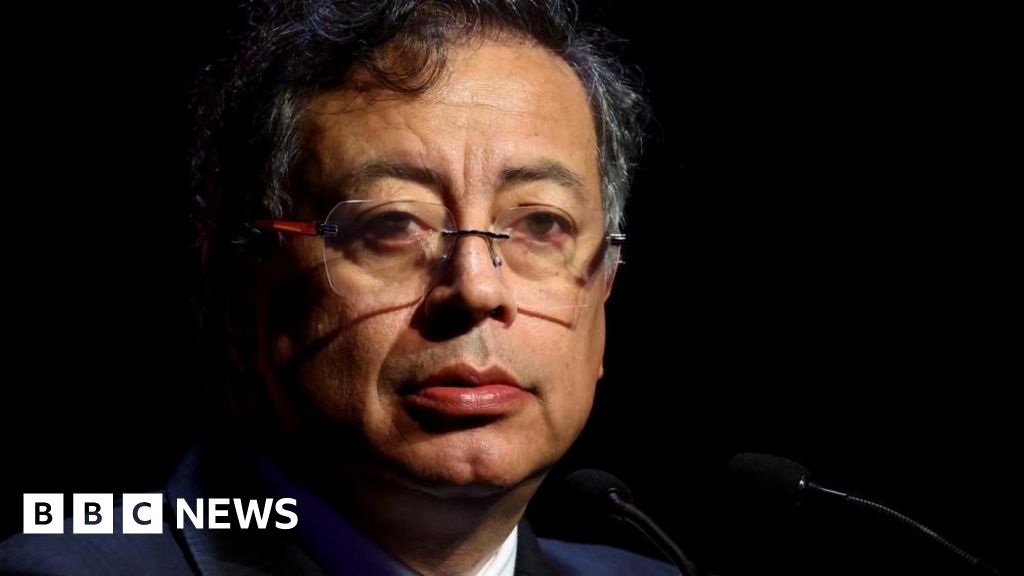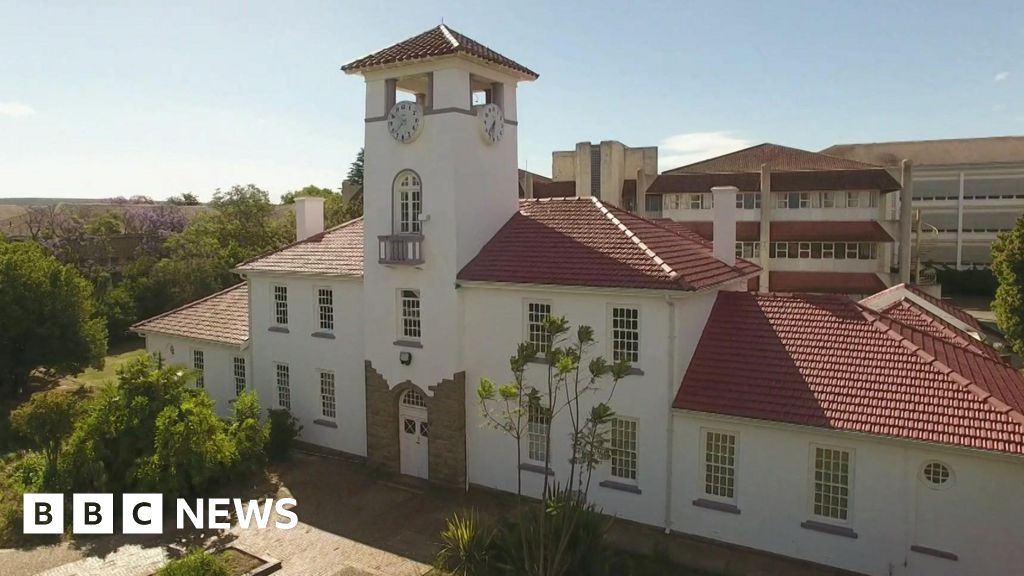
Nobel prize in literature 2025 is announced – live
Follow along as the next winner of the world’s most prestigious literature prize is announced in Stockholm
429 articles found

Follow along as the next winner of the world’s most prestigious literature prize is announced in Stockholm

Zelenskyy accuses Russia of wanting to sow ‘chaos’ as it repeats tactics from previous winters that left millions of Ukrainians without energy or heating

Until staff are unafraid to be open about genuine mistakes, however devastating, nothing will be learned – and nothing will change, says former health secretary Jeremy Hunt
)
Indian Army continues its relentless search for two Agniveer commandos of the elite 5 Para (Special Forces) unit, who went missing during an anti-terror operation in the Gadol forest of Kokernag.The Army, along with the Jammu and Kashmir Police, has launched a massive, multi-faceted search operation now in its third day.The search teams are utilizing drones, dog squads, and aerial surveillance from helicopters to navigate the challenging terrain. The search is being hampered by the rugged mountainous terrain, dense forests, deep gorges, and adverse weather, including recent snowfall.The operation is focused on the Ahlan Gadole forest area, which straddles the Kishtwar range, requiring searches from both the Kishtwar and Kokernag sides. As of October 9, authorities have not yet re-established communication or located the missing commandos.The operation was reportedly launched based on intelligence inputs about the presence of terrorists in the Gadol forest, a region with a history of counter-insurgency activities.The area has seen significant anti-terror operations and encounters. Notably, a major confrontation in the same forests in 2023 resulted in heavy casualties for the security forces.While the region is terror-prone, officials have stated that the loss of communication was due to extreme weather conditions, and no terrorist angle is yet seen.The Gadol forest, situated between Kishtwar and Anantnag, is known for frequent counter-terrorism operations. The Army has called for cooperation from local residents and is relying on advanced technology to aid the rescue efforts.According to Army sources, the missing soldiers are believed to have fallen behind their unit and lost their way while on duty in the forest. At this stage, no terrorist involvement is suspected in their disappearance. The sources also noted that the area experienced heavy snowfall that day, with around two feet of snow accumulating, suggesting that the severe weather may have played a role in the incident.
)
Rashtriya Janata Dal (RJD) leader Tejashwi Yadav on Thursday made a bold pre-poll promise, unveiling a youth-focused initiative that guarantees government jobs for every family without one. He stated that if his party comes to power, the new Act will be implemented within 20 days, aiming to ensure that no family remains without a government job within 20 months.Addressing a press conference in Patna, the RJD leader said that he will ensure that no household in Bihar is left without a government job. We are announcing today that in every family in Bihar where no one currently holds a government job, a new legislation will be enacted to ensure employment. Within 20 days of forming the government, this law will be passed and within 20 months, every family without a government job will have at least one member employed in government service. Tejashwi will ensure that no household in Bihar is left without a government job, ANI quoted Tejashwi Yadav as saying.#WATCH | Bihar elections | RJD leader Tejashwi Yadav says, ...I make a historic and youth-centric announcement today...We will bring a new Act and provide jobs to all families without a govt job...As soon as we form Govt, this Act will be brought within 20 days and in 20 months… pic.twitter.com/8Gs9yY17CI — ANI (@ANI) October 9, 2025Emphasizing that his promise to provide a government job for every household in Bihar is genuine, Tejashwi Yadav said he does not need to provide proof to fulfill it.We have done studies on this scientifically, and we have data of all such families on the basis of our survey. If we are making this announcement, it is my pledge that we are doing only what is possible. This is not jumlebaazi, we are not cheating anyone. Tejashwi does not need to give proof, he said.Emphasizing that this is only the first announcement, the RJD leader said that in the future, his party will continue to present its broader vision through various press conferences.People have constantly had expectations and hopes about what our roadmap and vision for Bihar are -- how we plan to take the state forward. So today, we want to make a historic and transformative announcement before you all. This is the first announcement, not the last one. In the future, too, we will present our broader vision through various press conferences, Tejashwi said.Bihar elections are crucial for the RJD as they seek to regain political dominance and secure a majority in the 243-seat assembly. Voting will be held in two phases on November 6 and 11, with counting scheduled for November 14.ALSO READ: Tamil Nadu Pharma Firm Owner Arrested Over Child Deaths Linked To Coldrif Syrup

Wild-spirited but laced with dim views on race and women, On the Road is due a reckoning. This elegant talking-head doc works best when its unpicking is most forensic

Artificial intelligence endangers democracy – but it’s less about specific deepfakes and more about a bigger transformation

The club will finally begin playing in Miami next season. For local fans near Chase Stadium there are mixed emotions

My Saturday felt mind-bending, from interviewing the woman who was married to Elvis to watching my team endure a 3-0 defeat to Millwall. How can one day contain so much, asks Adrian Chiles

A project to restore coastal wetland leads to astonishing discoveries of a host of life: seeds and plant scraps, as well as water fleas, worms, larvae and plankton

Test yourself on topical news trivia, pop culture and general knowledge every Thursday. How will you fare?

Colorado Republican congresswoman kicks off fourth term run with email to potential donors: ‘They tell us we’re crazy’

Exclusive: Republicans Against Perry are relaunching their campaign to oust Trump ally Scott Perry in 2026

There were two operating nuclear power plants in the state at the time, with a third under construction. These facilities were not directly affected by the moratorium, as they already had received the necessary permits. But costs associated with operating and addressing equipment failures grew and anti-nuclear sentiments persisted, causing the Rancho Seco and San Onofre nuclear facilities to shutter permanently in 1989 and 2012 respectively. Since 2012, California has only had one operating nuclear power plant: Diablo Canyon, near San Luis Obispo. The anti-nuclear campaign Opposition to nuclear energy in California can be traced back to the 1950s, when the Atomic Energy Act was passed in order to boost domestic nuclear power development. In the late 1950s and early 1960s, California residents successfully campaigned against the construction of a nuclear plant in Bodega Bay, roughly 70 miles north of San Francisco, citing concerns about public health, radioactive waste containing the ocean, and the risk of earthquakes due to the proposed plant’s location. These grassroots protests were quickly boosted by environmentalist groups like the Sierra Club, which supported citizen protests and legal action against proposed projects. The anti-nuclear campaign peaked in the summer of 1976, when residents were asked to vote on the “Nuclear Power Plants Initiative Statute,” which would place a complete ban on new nuclear plants and impose additional restrictions on those already operating. The measure failed, but it laid the groundwork for the moratorium passed later that year through amending the Warren–Alquist Act, which created the California Energy Commission, which oversees approvals of new energy projects. While it was not intended to prohibit nuclear energy in the state, nuclear advocates have labeled the moratorium as a “ban,” as it has continued to hamstring nuclear development after nearly 50 years. Lost investment Nuclear energy proponents have argued that the moratorium has placed California in somewhat of a “hypocritical” position, as officials have sought to phase out fossil fuels and accelerate the deployment of clean energy. At the same time, though, the state has continued to import electricity generated by fossil fuels like coal and natural gas from its Northwestern and southwestern neighbors. In 2023, California imported roughly 4,724 GWh of coal-generated electricity, according to the California Energy Commission. “It’s just incredible hypocrisy to outsource your pollution to places like Wyoming,” Gene Nelson, president of the Californians for Green Nuclear Power, told the Washington Examiner. Research has also suggested that with the moratorium on nuclear in place, California won’t be able to hit its goal is reaching net-zero emissions by 2045 on its own — meaning the amount of emissions released into the atmosphere is balanced with the amount being removed. Adam Stein, the head of the Nuclear Energy Innovation program at the Breakthrough Institute, told the Washington Examiner that California will be forced to import even more electricity generated by wind and solar in neighboring states, particularly as demand rises. In snubbing nuclear power, analysts estimate, California is losing billions of dollars worth of investments as large technology companies look to expand their AI operations. A study, co-authored by Stein, conducted by the Breakthrough Institute in 2022, found that the state will have up to $12 billion of unrealized capital investments between 2020 and 2040 if its laws limiting nuclear power remain in place. “It’s a lost opportunity for the state,” Stein said. “There are some communities, particularly near Diablo Canyon, that would like to host additional nuclear power…There’s a lot of investment and a lot of additional follow-on investment from growing industries, such as hyperscalers, [who] need additional electricity availability in order to grow in the state.” If California takes too long to open itself back up to nuclear power, some advocates warn potential investors will flee to other states that have greater energy flexibility. “Without access to abundant — ideally non-polluting — electricity, they’re going to have to take their business elsewhere,” Nelson said. “We look at states like Texas that are really trying to roll out the red carpet to get data centers to move to Texas, it’s very significant,” he continued. “And even other blue states like New York are saying, ‘Hey, we recognize that we need this nuclear power electricity,’ and they’re at least making the right sounds that they need more nuclear power in New York State.” Efforts to amend the bill The benefits of nuclear power in California haven’t been lost on clean energy advocates and Democrats, as there have been several attempts to either fully roll back or amend the law within the last 20 years. As early as 2008, state lawmakers attempted to fully repeal the moratorium and instead ban the Energy Commission from certifying nuclear power plants in seismically active areas. It would also require state agencies to consider storing radioactive waste in steel leak-tight containers on sight — a method known as Dry Cask Storage that is already approved by the Nuclear Regulatory Commission — as an appropriate solution for permanent waste storage. The measure died before making its way out of committee. Similar proposals to make small modular reactors exempt from the moratorium have also failed to be put to a vote. Most recently, two Republican assembly members and one Democrat introduced a bill that would also lift restrictions on new SMR facilities. This bill also has yet to move out of committee. While interest in growing, many supporters of the technology are not surprised that these efforts have failed. “I don’t think [nuclear energy has] been good enough until now,” Ryan Pickering, an energy developer and nuclear power advocate, told the Washington Examiner. “And so I think this is a really ripe time for California to change its mind.” What’s next Leading Democrats in the state, including State Senators Henry Stern and Scott Wiener, have publicly expressed their openness to building new nuclear energy facilities in California. Even Democratic Gov. Gavin Newsom has signaled an interest in keeping the Diablo Canyon plant open to help reach the state’s climate goals. However, the growing bipartisan support for the carbon-free source of energy likely won’t be enough to walk back the moratorium within the next year. For folks like Pickering and Nelson, the focus should instead be on keeping Diablo Canyon open. The nuclear plant was initially slated to close in this year before its life was extended to 2030 last year. Now, supporters are looking to extend that further to 2045. “We are a little hesitant to try to repeal the moratorium next year, out of respect for the proceedings of saving Diablo,” Pickering said. “But there are ideas about other bills, like workforce development, moving our nuclear fuel around, feasibility studies that we’d like to propose as well to kind of normalize nuclear and make it a less binary issue.” Nuclear advocates say that, if Diablo Canyon does receive the license extension from both state agencies and the NRC, they may have the momentum to repeal or amend the moratorium. They would face pushback, though. Amanda Halter, a managing partner with Pillsbury law focused on environmental and natural resources issues, told the Washington Examiner that internal politics within the Democratic Party could delay any change, particularly as left-leaning groups like the Sierra Club continue to advocate against nuclear power. “Those politics play into it hugely, because those are very important local constituencies. They’re very important constituencies in terms of the politics of simply getting out of committee in California,” Halter said. “Those groups are incredible at organizing, and they are influential with legislators.” CAN TRUMP TEAM MEET AMBITIOUS NUCLEAR ENERGY DEADLINES? As the nuclear renaissance continues to make its way across the U.S., Halter pointed out that many environmental and climate-focused groups are becoming more open to nuclear power. “It wouldn’t surprise me if some of those groups that have historically been anti-nuclear change their tune,” she said.

Donald Trump says Israel and Hamas have reached a deal to pause fighting and release some hostages and prisoners

Dozens of worshippers gather at sombre but defiant vigil a week after attack in which two men were killed

Drivers' wives and girlfriends have become even more popular in recent years following the rise of social media and the Netflix series Drive to Survive. Sainz's girlfriend, model Rebecca Donaldson, Norris' partner, actress Magui Corceiro and Charles Leclerc's girlfriend, influencer Alexandra Saint Mleux, all have huge online followings of their own. "I understand that if there is an overtake, a very tense moment in the race, it is understandable that the production team might want to show a reaction shot if they have seen that it has worked in the past," said Sainz. "But [they only should] if the competition is respected and you are always showing the important moments of the race. "The other [thing] is fine but don't lose sight of the main thing. For me, they go overboard a little showing the celebrities and girlfriends." An F1 spokesperson said: "We always focus on giving our fans the best possible footage of the race and never compromise the key focus - the racing on track. "Our team does a great job of covering a highly complex situation with multiple cars at different points on a track and also provide great context moments of the grandstands, high-profile guests and the locations we race at. We are always in pursuit of excellence and improvement in what we deliver."

On Wednesday, Petro replied to a post on X by US Senator Adam Schiff, a Democrat, who said he would vote to block strikes against vessels in the Caribbean as some lawmakers sought to challenge in Congress the use of the armed forces. The Colombian president said that a "new war scenario has opened up: the Caribbean". Petro added that "indications show that the last boat bombed was Colombian with Colombian citizens inside it. "I hope their families come forward and report it. There is no war against smuggling; there is a war for oil and it must be stopped by the world. The aggression is against all of Latin America and the Caribbean." Petro did not provide further details about the alleged identities of those on board. The US has not commented on the identities of the individuals killed in the strikes. The White House said in a statement that it "looks forward to President Petro publicly retracting his baseless and reprehensible statement". It said while the two nations had "policy differences", the US remained "committed to close cooperation on a range of shared priorities, including regional security and stability". The US says its strikes, which began on 2 September, have targeted vessels off the coast of Venezuela that it alleges are carrying illegal drugs. First US strike on 'Venezuela drug boat': Was it legal?What is Trump's goal after bombing 'Venezuela drugs boat'? The measure considered by the Senate on Wednesday, which would have required Trump to seek congressional approval for the strikes, was rejected in a 48-51 vote. It had been introduced by Democratic Senators Schiff and Tim Kaine. The vote broke down mostly along partisan lines. Earlier this month, a leaked memo sent to Congress said that the US was now categorising itself as in a "non-international armed conflict". Framing this as an active armed conflict is likely a way for the administration to justify the use of wartime powers, including killing "enemy fighters", even if they pose no violent threat. Trump has already designated many cartels, including in Mexico, Ecuador and Venezuela, as terrorist organisations – granting US authorities more powers in their response to them.

The University of Fort Hare, located in Alice in the Eastern Cape, is one of South Africa's oldest and most historically significant universities. Founded in 1916, it is where many anti-apartheid activists and regional leaders who opposed colonial rule, such as South Africa's Nelson Mandela and Zimbabwe's late leader Robert Mugabe and Botswana's Seretse Khama, studied and first engaged with politics. Videos shared online showed plumes of smoke billowing and a large fire engulfing buildings at the university. Vice-chancellor Prof Sakhela Buhlungu said in a statement that the "large-scale destruction of of property" showed that they were dealing with "much bigger issues with a significant component of sponsored violence and criminality". The university has ordered students to leave its premises by 1700 local time [1500 GMT] on Thursday. It said the "actions of a few" had endangered the safety of the university community and disrupted its academic programme. Police spokesperson Siphokazi Mawisa said protesting students had set four buildings at the university on fire and the situation was still "tense". No arrests has been made, the police said. Despite being evicted from campus, students have vowed to continue their protests, local news outlet Newzroom Afrika reports. Student leader Asonele Magwaxaza earlier told SABC that they were "angry... frustrated because they have been suppressed" by the management. "The student governance has been suppressed and compromised... We have been writing to the council, to the management, but they are arrogant, they are not responding, they are not doing anything," he said. Education officials are said to be due to meet student leaders later on Thursday.

The princess says that research evidence shows the importance of creating healthy and warm relationships within families and between people, with lifelong benefits for physical and mental health. But she warns, in an essay The Power of Human Connection in a Distracted World, that social trends are going in the opposite direction and that there are more lonely, isolated people and that families are not giving each other adequate attention. "When we check our phones during conversations, scroll through social media during family dinners, or respond to e-mails while playing with our children, we're not just being distracted, we are withdrawing the basic form of love that human connection requires," she writes. This is a particularly acute challenge for today's children who are in a "world immersed in digital technology", says Catherine, ahead of a visit to an early years centre in Oxford later on Thursday. Her husband Prince William, in a conversation on an Apple TV+ show, recently said that none of their three children were allowed to have smartphones. In her essay published on the website of the Royal Foundation Centre for Early Childhood, Catherine says that children need to be encouraged to develop social and emotional skills, which will help them throughout their lives. But that can be impeded by a "world filled with technological distractions", she argues. "We're raising a generation that may be more 'connected' than any in history while simultaneously being more isolated, more lonely, and less equipped to form the warm, meaningful relationships that research tells us are the foundation of a healthy life," she writes. This echoes some of the messages that the princess has posted on social media, such as: "Our lives flourish when we cherish the bonds of love and friendship. It has never been more important to appreciate the value of one another." The Royal Foundation Centre for Early Childhood was launched in 2021, with the aim of raising awareness and gathering research evidence about the importance of children's first years.